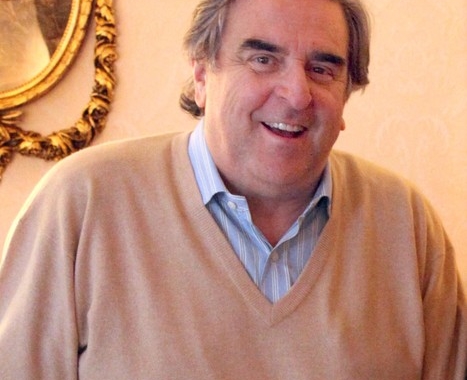
“My personal experiences in the Pio Cesare family home
My region, Piedmont, has always been known for its great red wines, made from native grape varieties (especially Nebbiolo, Barbera and Dolcetto). As early as Plinius, the 1st-century Roman historical writer, cited Piedmont wines as being of the highest quality. Towards the end of the last century, my great-grandfather founded the company that still bears his name. My great-grandfather was in love with our hills and what they produced. This love led him to found the family business to produce quality Barolo and Barbaresco, bottle them and make them appreciated by connoisseurs. At that time, in 1881, wine was sold mainly in bulk, and the number of houses that vinified and bottled with their own labels was limited. That’s why my great-grandfather’s choice was both courageous and difficult.
He selected the vineyards and winemakers who would supply us (several families still supply our house today). He followed the work in their vineyards, right from the pruning stage, to make sure we got top-quality grapes. He established such a trusting relationship that grape prices were set at the end of the harvest to guarantee the best price for the quality. Here, as is often the case elsewhere, each hill gives a different character to the wines of the same grape variety. My great-grandfather would gather grapes of the same variety from different vineyards: one chosen for bouquet, another for body, another for suppleness and finesse, yet another for ageing potential. The result was a Barolo of identifiable quality, with the “Pio Cesare style” that would ensure the success of our company, one of the first to export the great reds of Piedmont.
In addition to Barolo and Barbaresco, he produced Alba’s range of great red wines, Nebbiolo d’Alba, Barbera and Dolcetto. On our hills, Nebbiolo has always been planted at the top, facing south and southwest, while Barbera and Dolcetto are planted facing southeast and in the center. My grandfather and father have followed the path chosen by my great-grandfather, and quality will continue to be the hallmark of the house. And all this despite increasingly fierce competition: the number of houses bottling with their own labels was multiplying. When I took over in 1973, I received a well-established legacy of quality and image, but at the same time, a commitment that was my personal challenge.
In the early ’70s, several new young winemakers joined the ranks of the old, producing good Barolo and Babaresco; our colleague Elio Altare was the flag bearer of this new wave. At the same time, the notion of “crus”, i.e. the mention of the vineyard on the label, was gaining ground. In my turn, I remained faithful to the Pio Cesare tradition, producing a Barolo whose qualities came from different vineyards; at the same time, and this was one of the most important innovations I created in our family, I decided to buy vineyards in very favorable positions to also produce my crus (Bariolo Ornato, Barbaresco, Bricco, Barbera Fides). These wines maintain our house style to some extent, but in particular exalt the typical terroir characteristics of the vineyards from which they come.
I was convinced that the future of our wines was increasingly linked to viticulture, as cellar techniques were insufficient to achieve the highest level of quality. Indeed, as you well know, vineyard control has become the most important aspect of our profession; we can reduce yields to our liking, we can study and choose the different clones, the way to prune, we can better control the quantity of grapes and reduce them sometimes as drastically, we know better the different techniques to determine the date of harvest (not only the quantity of sugar). At the time, I was totally dissatisfied with the white wines from my region (which, incidentally, have never enjoyed a great reputation) and my dream was to produce a white wine that could have the color of white wine and the bouquet of the original grape variety, but at the same time, inherit the terroir, the soul of our great red wines.
In 1981, I created a vineyard in the heart of our family’s Barbaresco vineyards. My Chardonnay cru is called Piodelei, and every time I taste it I’m delighted with my choice. We now produce an average of 300,000 bottles (Barolo, Barbaresco, Barbera, Dolcetto and Chardonnay), 70% of which are exported. The grapes come from estate vineyards (around 35 hectares) and the rest is bought from the usual, almost “historic” suppliers, since these are families who already supplied my great-grandfather. To conclude, in a nutshell, I feel I’m a conservative bound by the best traditions, and at the same time, an innovative, daring winegrower who doesn’t shy away from novelties as long as they can improve the quality of his wines, without detracting from the typicity of his grape varieties.
